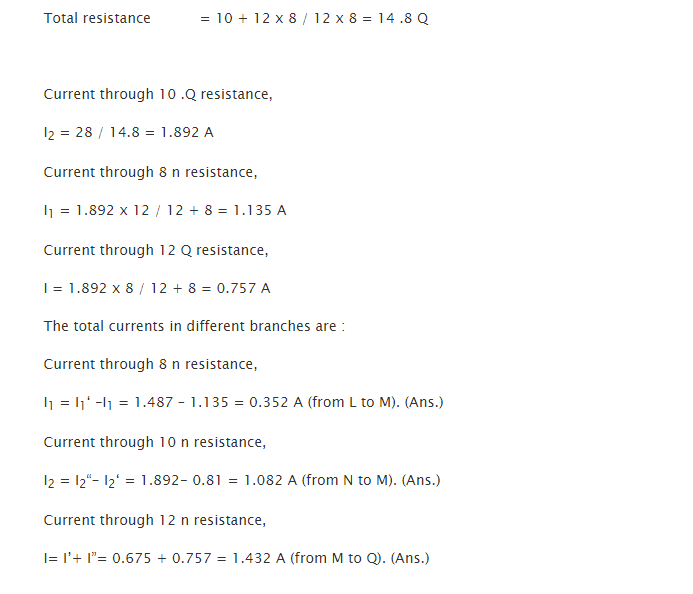When some branches of the circuit contain electromotive force, this theorem is termed as a successful platform useful in networks solution.
The theorem states “The branches carrying current is the numerical sum or addition of a number of currents in individual fictitious. This number has to be exactly same to the sources in number in the electromotive force which is more than one source in any network. The each of currents is because of the electromotive force with separate action in every source of the same. In addition to the same, the sources of the e.m.f which are remaining are swapped by the conductors that carry the resistances similar to the respective sources of resistances internally.
Please note that this theorem is applicable only when the linear function is examined between the current and voltage to linear networks (as covered under Ohm’s Law).
Let’s discuss the procedure of the theorem:
- The source will be replaced by a short circuit when the resistance inside of any of the sources is comparatively minor than other resistances. But keep one of the sources by the internal resistances without replacement.
- By using Ohm’s law, find the value of currents flowing in different branches.
- Now repeat the complete procedure each time by considering eache.m.f s. as the individual e.m.f.
The value of current in total in any circuit is the arithmetical summation of currents because of each source.
Note: It is important to notice the flow of the current while you are finding the value of the overall current in whichever branch. The current will add when it is flowing exactly in the similar route and subtract when it flows in opposed direction.
Explanation:
– In the figure below, I 17 I2 and I is the currents value.
– In the next figure, you can see the value of the current. These values could have been achieved if the battery could have acted alone in left-hand side.
– In the same way, Fig. 51 is representing the conditions that are gained when battery at the right-hand side is acted alone.
Let’s combine the values of currents of Fig. 50 and 51,
The actual values of the same in Fig. 49 can be attained

Example
Calculate the value of the currents in the diverse branches in the network which is shown in Fig. 52 by using superposition theorem
Solution
Please refer to fig. 53 for the first step
We will replace E1 e.m.f with E2 e.mf as the circuit is shown in figure 53 by zero internal resistance.
Please refer to figure 54 for the second step
Let’s remove E1 and we will find the current because of E2.
The current is shown in the Fig. 54. · ·
In dissimilar branches, the total currents will be calculated as:
Link of Previous Main Topic:-
- Current Electricity Basic Concepts
- Definitions of Important Tenns Relating Network
- Limitations of Ohms Law
- Kirchhoffs Laws
- Applications of Kirchhoffs Law
- Source Conversion
Links of Next Electrical Engineering Topics:-










